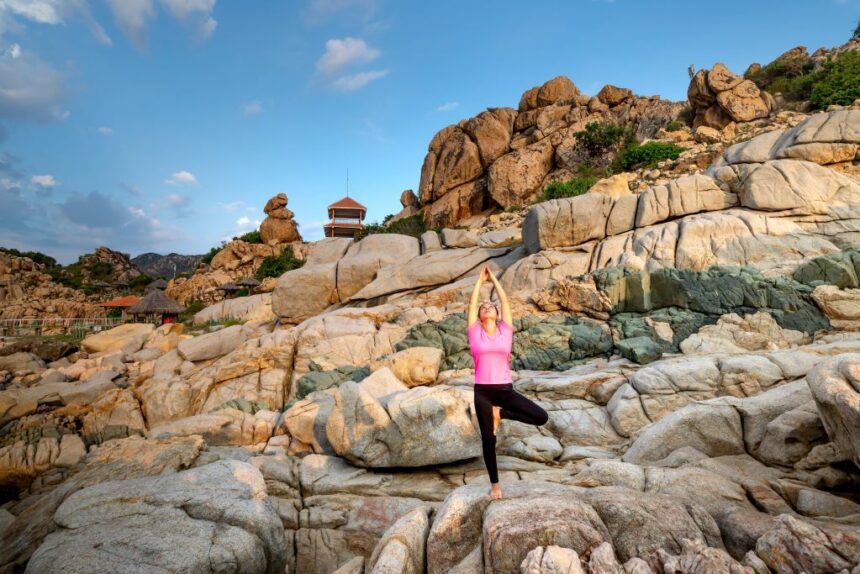Vrksasana Yoga asana: Welcome to the holistic yoga asana guide. In this post, you will get to know in detail about the Vrksasana Yoga asana or tree pose, its benefits, and precautions to keep in mind. Read this post, to master the yoga asanas.
Vrksasana yoga asana
Vrksasana Yoga asana is also known as Tree pose. Vriks means a tree is a balancing asana. It is the first single-legged standing pose for beginners. Before practicing this pose one has to come into tadasana. Vrkasana therefore implies a pose where one stands firm like a tree. This is the single-leg standing pose.
How to practice Vrksasana yoga asana
- Stand in Tadasana.
- Bend the right leg at the knee and place the right heel at the root of the left thigh. Rest the foot on the left thigh, toes pointing downwards.
- Balance on the left leg, join the palms and raise the arms straight over the head.
- Stay for a few seconds in the pose breathing deeply. Then lower the arms and separate the palms, straighten the right leg, and stand again in Tadasana.
- Repeat the pose, standing on the right leg, and placing the left heel at the root of the right thigh. Stay for the same length of time on both sides, come back to Tadasana, and relax.

Benefits of Vrksasana yoga asana
- Tree Pose is a strengthening posture that can help build confidence.
- This pose helps to improve the posture and counteract the effects of prolonged sitting.
- On your standing leg, this pose strengthens your thigh, buttock (glute), and ankle.
- On your lifted leg, this pose gently stretches your entire thigh and buttocks.
- The pose tones the leg muscles and gives one a sense of balance and poise.
- It helps to boost energy and stretches around your shoulders and your back, Strengthening your core
- This pose also helps to improve focus/concentration.
- Vrikshasana calms and relaxes the central nervous system and stretches the entire body. It strengthens the legs opens the hips and improves the neuromuscular coordination.
- It also improves blood circulation. Thus, it may benefit in conditions that may pose stability issues like cardiovascular disease, rehabilitation after injuries, and managing the symptoms of ADHD such as balance, stability, and more.
Precautions
- As a beginner first practice the Tree Pose while standing a few inches from a wall on your straight-leg side. Even if you don’t touch the wall, the proximity of it helps to feel confident you won’t fall out of the pose. But if you wobble, you can simply reach out a hand and rebalance yourself.
- Don’t turn out the foot on your standing leg. This can misalign the supporting knee and hip. Keep your toes and knee facing forward.
- Never place your foot on the opposite knee. Rather, keep the foot above or below the knee to protect the knee of the standing leg.
- If you have shoulder pain, numbness, tingling, or shooting pain when you lift your arm, try keeping your hand on your hips.
- People suffering from dizziness should avoid practicing this pose.
- Those having swelling and pain in multiple joints (arthritis) must avoid this asana.
- In case of chronic disease/ pain/ injuries/cardiac problems, a physician or a Yoga therapist should be consulted before performing Yogic practices.
Vrikshasana or the tree pose is a common standing Yoga asana. This pose has numerous benefits for the brain, immunity, spine, and stability as listed above. One may practice this posture regularly, preferably under the guidance of a Yoga trainer, who will advise you regarding the necessary precautions to be taken.
Read more: Tadasana yoga asana: instructions, benefits, precautions, tips
The Incredible Impact of Yoga for Sinus Relief : साइनस राहत के लिए योग का अविश्वसनीय प्रभाव
10 Essential Winter Skin Care Tips: सर्दी में ऐसे रखे ड्राई स्किन का ध्यान






